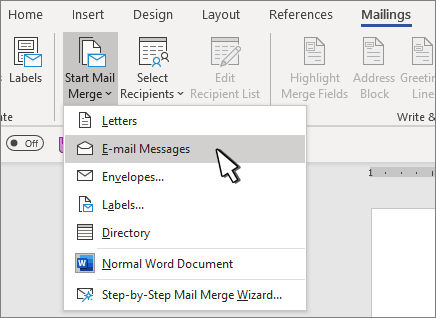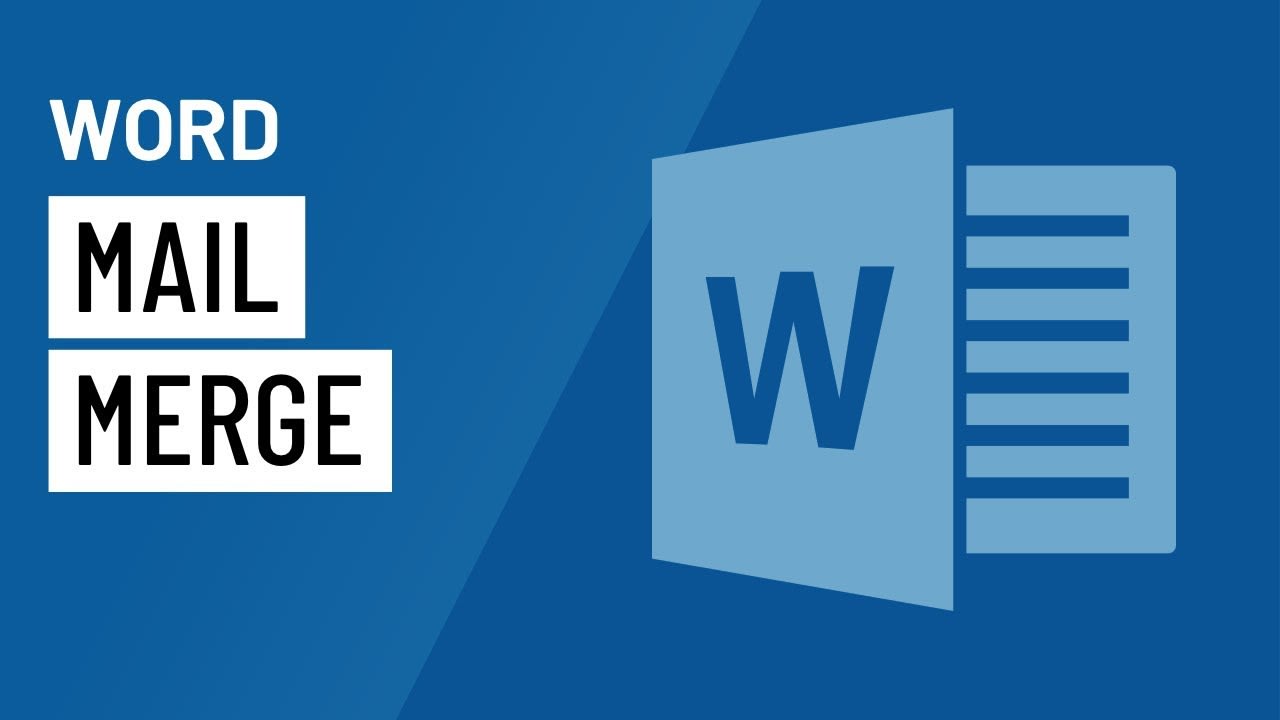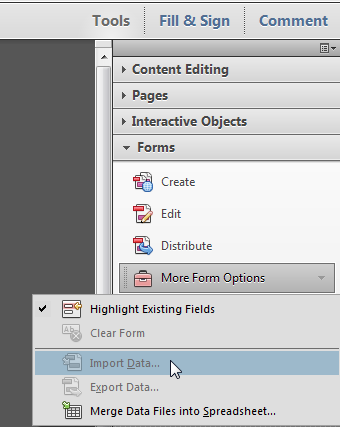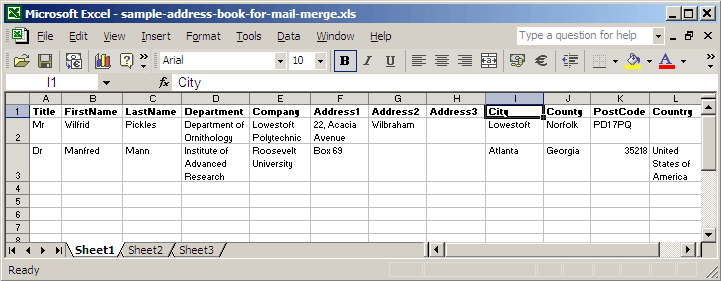In essence, when you mail merge labels from Excel to Word, the column headers of your Excel sheet become placeholders in a Word document denoting the mail merge fields. Each placeholder corresponds to one entry such as first name, last name, salutation, city etc. How to do a mail merge in Word and Excel. Start Excel and open a blank workbook. You need to import or enter the data you plan to use, and how you do this depends on how the data currently. Create your Excel Spreadsheet. The most important step in the mail merge process is to set up. Following our article on importing Excel data into a Word mail merge, here are the options for using percentages. Excel might show a percentage but the number stored is a fraction. For example 25% is stored in Excel as 0.25. Normally, a Word mail merge will import the raw number from Excel and let you format it in way we’ve described before.
Topics Map > Office 365 > WordPersonalize names, addresses, and much more in bulk email or documents. Any data stored in an Excel workbook can be used to personalize communications.
Note: These steps only cover what's shown in this video. For detailed steps on how to do a mail merge, please see Mail merge using an Excel spreadsheet.

Use an Excel spreadsheet for mail merge contacts

Open the Word document that you want to mail merge.
Select Mailings > Select Recipients.
Select Use an Existing List.
Select the Excel spreadheet you want to use, and select Open.
Select the worksheet that you want to use, and select OK.
Each worksheet name ends with $.
Select Edit Recipient List to view the data source, select the checkboxes for the people you want to send to, and select OK.
Save your Word file, to save the connections you've made.
Want more?
If you have any questions, come by the Help Desk at Hardman & Jacobs Undergraduate Learning Center Room 105, call 646-1840, or email us at help@nmsu.edu.
© AleksandarGeorgiev/Getty Images With Word's mail merge feature, you can generate personalized documents, like mailing labels, with a mass import from Excel. AleksandarGeorgiev/Getty Images- You can do a mail merge in Microsoft Word and Excel to create personalized documents for many recipients at once.
- You can import an Excel data table into Word to customize your template with names and addresses.
- Mail merge helps you quickly create auto-personalized letters, envelopes, labels, and more.
- Visit Insider's Tech Reference library for more stories.

It's surprisingly easy to set up a mail merge, which lets you create seemingly personalized communication for a large number of recipients without creating each message by hand.
To mail merge a document - like a letter, envelope, printing label, or email - all you need is Microsoft Word and Excel, plus all the names and addresses you want to merge.
What is a mail merge?
The mail merge is made of two parts. First, you'll need the data file in Excel. This is simply a table that includes the information you want to merge - usually names and addresses, though you can merge data about anything.
In addition, you'll create a mail merge template in Word - this is a document that includes the boilerplate text you want to be the same for every recipient as well as the placeholder for the data that Word will insert from the Excel data file.
How to do a mail merge in Word and Excel
1. Start Excel and open a blank workbook.
2. You need to import or enter the data you plan to use, and how you do this depends on how the data currently exists. For example, if you have a large number of addresses stored in a CSV file, import it into this Excel file. Click the 'Data' tab in the ribbon and choose 'Get Data,' then 'From File,' and finally 'From Text/CSV.' The data might also already be in an Excel spreadsheet, in an Access database, or you might need to type it into Excel from scratch. Whatever method you need to use, get it into the spreadsheet.
© Dave Johnson/Insider Import data into your spreadsheet or create it from scratch. Dave Johnson/Insider3. If the data doesn't already have a header row, add one now (you can right-click Row 1 at the far left and choose 'Insert' from the menu). Label the header so you know what each column contains. Word will also use this row to import your data correctly.
© Dave Johnson/Insider Ensure your data table is labeled with a header in the first row. Dave Johnson/Insider4. You might need to change the formatting of some columns. For example, if the Zip Code column is formatted for numbers, zips with leading zeros will appear without the zero as a four-digit number. To fix that, click the column header to select the entire column. Then click the 'Home' tab and click 'General' in the Number section of the ribbon. Select 'Text' from the menu.
5. Save the spreadsheet. You can save it anywhere, but you'll be able to find it more easily in Word if you save it in the 'DocumentsMy Data Sources' folder.
6. Open Microsoft Word. Open a new, blank document and then create the boilerplate, common text you want to include in every mail merged document.
7. Position the cursor at the top left of the page, where you want the recipient's name and address to appear.
8. Click the 'Mailings' tab in the ribbon and then click 'Start Mail Merge.' In the drop-down menu, choose 'Letters' or whatever other template you want to use. For this example, we'll make a letter, but you can use this process for any kind of document. You shouldn't see any change in the document.
Mail Merge Using Excel Sheet
© Dave Johnson/Insider Start the mail merge process by clicking the 'Start Mail Merge' button in the ribbon, and selecting a template type. Dave Johnson/InsiderQuick tip: In the 'Start Mail Merge' drop-down, you can also select 'Step-by-Step Mail Merge Wizard' at the bottom of the list for a more guided run-through of the mail merge process.
9. Click 'Select Recipients,' and in the drop-down, choose 'Use an Existing List…'
10. Find the Excel spreadsheet you created and select it. If you saved it in the 'My Data Sources' folder, it should be in the default location for mail merges.
11. In the 'Select Table' dialog, choose the sheet that contains your data table. If you created a new spreadsheet for this purpose, there will only be one. Make sure to check the box for 'First row of data contains column headers.' Then, click 'OK.'
© Dave Johnson/Insider Select the sheet in the workbook that contains the mail merge data table, check the box, and click 'OK.' Dave Johnson/Insider12. In the 'Write & Insert Fields' section of the ribbon, click 'Address Block.'
13. In the 'Insert Address Block' dialog box, choose the style you want to use to insert the data - you should see the first entry in the data table as an example.

14. If you don't see all the fields you expected, you need to match fields from the spreadsheet with the mail merge feature in Word. Click 'Match Fields…' and then choose the field names from the spreadsheet to fill in the blanks. Word usually does a good job of guessing, but it's not unusual to have to edit your mail merge fields. When you're done, click 'OK' and then 'OK' again.
© Dave Johnson/Insider You might need to match fields from the data table to Word. Dave Johnson/Insider15. You should now see a mail merge placeholder in the document.
Mail Merge Using Excel 2007

16. To preview your document, click 'Preview Results' in the Preview Results section of the ribbon. Use the forward and back arrows to see how each data entry looks in your document. You can use this to make sure there are no embarrassing data entry or conversion errors.
© Dave Johnson/Insider After the placeholder is in the Word doc, you can preview the document and see how each entry from the data table looks. Dave Johnson/Insider17. When you're ready, click 'Finish & Merge,' and choose how you want to complete the document, such as via printing or email.
18. You can save this Word document to reuse it again in the future.
Mail Merge Using Excel 2010
How to edit a drop-down list in Excel, depending on how you created itHow to export your iPhone contacts to an Excel spreadsheet using iCloudHow to use the find and replace feature in Microsoft Word on your Mac in 2 different waysHow to recover an unsaved Microsoft Word document, and enable AutoSave so you never lose one again